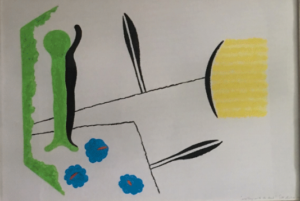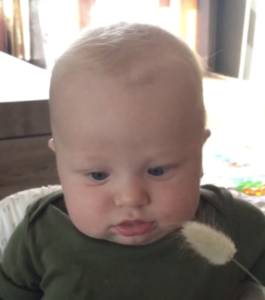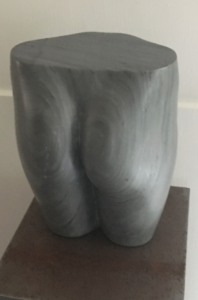“Tell Me What You See…”

Recently, I had coffee with a good friend, one cup quickly turned into several. We found ourselves discussing the lack of resources that support human interaction, specifically, in the world of education. It’s possible that saying a lack of resources isn’t the right phrase. We expect teachers to instill the importance of human interaction with their students, but we don’t acknowledge and prioritize that interaction between teachers, admins and adult learners in a genuine way.
If you’re asking yourself what this means: educators are encouraged to facilitate effective PLCs, coaches are asked to jump in and “coach” during the second week of school, teachers need to “get teammates on board,” or provide one day for staff to team build for an entire year’s worth collaboration. Yet, establishing a connection with colleagues isn’t prioritized which limits success. These pseudo relationships create less effective interactions, forced conversations and a lack of stakeholders on both sides of the equation.
This concept may seem elementary or completely foreign. I work with educators who say, “I went to school to work with children, no one prepared me for the challenges of working with adults.” Honestly, I can’t blame them. From my experience, I agree, there weren’t courses that addressed adult learning, communication, team building, or highlighting the importance of genuine relationship building. With 10 years in the workplace, these are skills that learned on the job, maybe we should consider investing in authentic interpersonal communication.
“No, you ask me a question about the art, and tell me what you see.”
I received this response three years ago when my husband and I traveled in The Netherlands. We stayed at a B&B located above an art gallery. Growing up with a sister who studied art, I was always fascinated by her work and how often I did not “see” the message. It frustrated me. I strived to look at her work, and understand her message. Unfortunately, I stand there. Looking. Thinking. Trying to synthesize a deep meaning. Yet…alI I see is an ass, a rock hard one.
This frustration carried with me for years. Until our stay at Jacoba’s art gallery. We were enjoying a steaming cup of coffee as I asked her for a tour of her gallery. Her curt, Dutch reply was, “ No. I will walk with you, you will ask me a question about the art, and tell me what you see.” I awkwardly laughed knowing this was a terrible game for me to play. Quickly realizing she wasn’t laughing, I grabbed my coffee and walked over to the above statue with her.
“Through art, humans can learn how to communicate and connect.”
This was the first thing Jacoba said as we looked at the (above) statue. She explained that engaging with artwork allows humans to connect.
- What do I see?
- What do I think about the piece?
- Is that similar or different from her interpretation?
Reassuring me there was no right or wrong way to interpret the work, my reservations lifted. We carried on discussing what we saw, what it meant, and exploring what we didn’t see.
This experience sticks out nearly 3 years later. Works of art, allowed complete strangers to engage for an hour, one an expert in art and the other feeling like the first statue about it. I began to see her perspectives and interpretations and likewise for her. We found ourselves talking about the art, but also built a relationship as we explored the foundation of our thoughts and emotions.
Living Aboard
Ironically, three weeks ago my husband, son and I relocated to The Netherlands for 10 months. Being in this country, reminded me of Jacoba and our art walk. Many interactions provide us with the opportunity to connect with others, but are we aware of them? If so, do we allow ourselves and colleagues to invest in these interactions? Regardless of language barriers, location, grade levels, ages etc. opportunities to connect are all around us.
The Universal Language
As expected, my 6-month-old doesn’t speak. However, I can’t tell you how many “conversations” we engaged in with individuals who speak Dutch. A majority of these conversations are not understood by me, but we connect and laugh over Cooper’s smile. Last week in the flower shop, the store owner tickled Cooper’s face with a flower and conversed with him in Dutch. She looked at me blankly as I responded in English and Cooper giggled. We carried on for another 5-10 minutes; three people and three languages. Her speaking to Cooper in Dutch. Me responding in English. Then, both of us laughing at Cooper who spoke in giggles and grins. None of us understand the entire conversation, but we connected. When I went back a few days later we engaged as if we were old friends. Even though we don’t speak the same language, my return trip was welcomed with a genuine smile and Cooper was swept out of my hands for a walk through the fragrant flowers. It doesn’t take an hour or a lifelong friend; the value is in taking the time to connect.
 Lasting Thoughts
Lasting Thoughts
Educators, at all levels, need the opportunity and time to establish a relationship before they are assigned to work together. Time to chat over a fragrant cup of coffee or discuss a piece of artwork. It’s important to step back from the jargon, the test scores, and data to connect with colleagues. A majority of our time is spent with our colleagues, not our spouses or partners, why don’t we invest in these relationships? There is a human desire to connect with one another. Prioritizing, encouraging and valuing those relationships strengthens the work, the culture and all subsequent interactions.
As a new school year starts, don’t forget to invest in the relationships from the start.


❤️??????
I love this and agree wholeheartedly, it’s that old currency that runs educators lives, time. We never have enough, but it so worth the investment to take the time to BE with, and learn to understand another human.
So true, and I love your honesty!